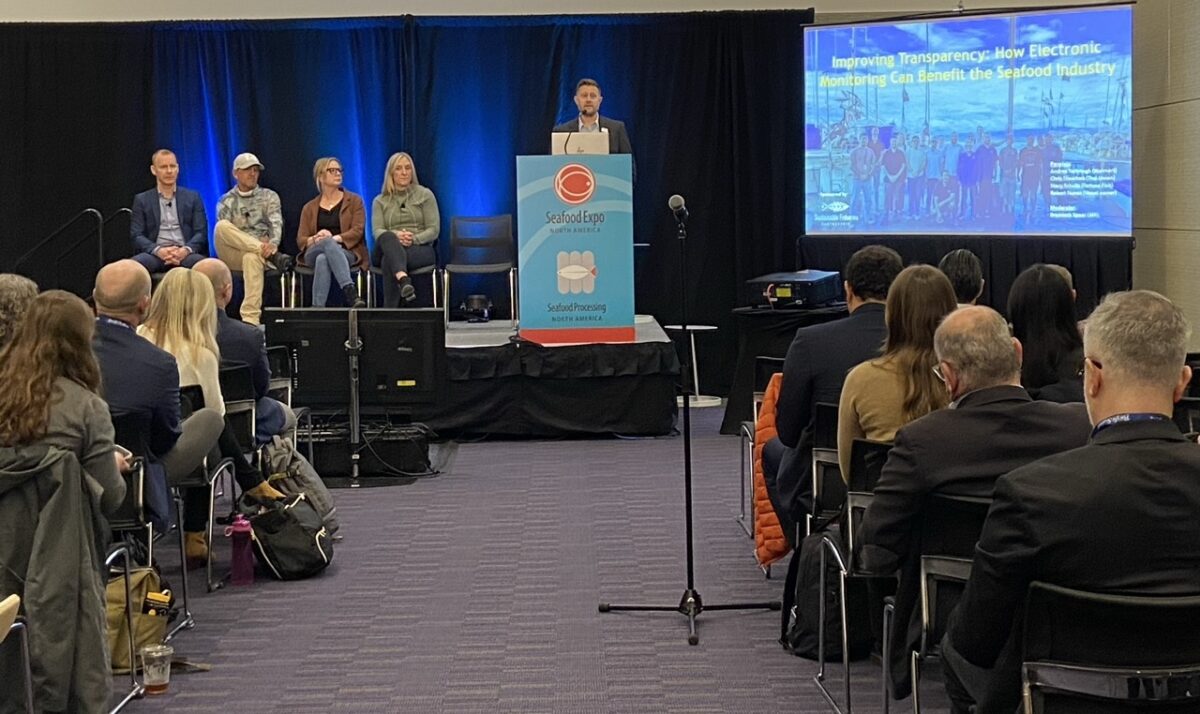
(L-R) Chris Shearlock, Ambient Sustainability Director, Thai Union; Robert Nunez, longline vessel owner, Costa Rica; Stacy Schultz, Director of Supply Chain Stewardship, Fortune Fish & Gourmet; Andrea Yarbrough, Merchant, Walmart; Braddock Spear, Global Policy Director, Sustainable Fisheries Partnership
SFP Global Policy Director Brad Spear moderated a panel this morning on the benefits and challenges of implementing electronic monitoring (EM) on fishing vessels to improve transparency, traceability, and data-sharing. In introducing the panelists, Spear noted that, because of gaps in knowledge and experience, “the true potential of EM is not being realized.”
Andrea Yarbrough of Walmart and Chris Shearlock of Thai Union both noted that EM is a key part of their corporate sustainability commitments, which require that all boats supplying their tuna have human observers or electronic monitoring – by 2025 for Thai Union and 2027 for Walmart. Stacy Schultz, of Fortune Fish & Gourmet, said that EM is extremely useful for a company like hers in the middle of the supply chain to obtain hard to get “first mile data” on their sourcing.
Robert Nunez, a longline vessel owner from Costa Rica, is trialing EM on some of his vessels. “Information is power, technology is power,” Nunez said, adding that the additional traceability data that they can get with EM can help to differentiate their product in the market. With smaller boats, and only 4-5 crew members per vessel, they do not have room for a human observer, so EM is a great alternative, he added.
The panelists all agreed that despite the benefits of EM, there are still challenges related to cost and implementation, making sure that the data collected is useful and that the systems that work in one fishery can be replicated in others. SFP is working with The Nature Conservancy and government and NGO partners in Latin America to develop pilot projects to further test the systems and raise awareness in buyer markets.
